
What is an SEO Roadmap?
An SEO roadmap is a documented plan of action that outlines all the important tasks that need to be completed during the lifetime of an SEO campaign.
The SEO roadmap also includes important information on workflows, a project timeline, due dates for each task, and the people responsible for completing and managing each task in the roadmap.

As the name suggests, the SEO roadmap can be compared to a map that you use when traveling from one city to another.
Imagine for a moment that you’re driving from Los Angeles to Houston. A map will show you the directions and routes you need to take to reach your destination as soon as possible.
Without a map, you won’t know which offramps and onramps to take, resulting in potentially getting lost or taking longer than necessary to reach your destination.
An SEO roadmap is very much the same, it will show you the actions or “routes” that you need to complete in order to reach the final destination, which in most cases is higher search engine rankings.
In this blog post, we will cover everything there is to know about SEO roadmaps and how you can create one for your business.
At the end of this article, you can download a free SEO roadmap template that you can use as a starting point for developing your own roadmap.
Using an SEO roadmap can contribute to the success of any search engine optimization campaign.
Why Use an SEO Roadmap?
The main reason for using an SEO roadmap is because it provides guidance for all parties involved in your SEO campaigns.
An SEO roadmap gives stakeholders, including staff members and clients, a clear idea of the key initiatives that need to be implemented over the lifetime of an SEO campaign.
This will take the guesswork out of which activities need to be prioritized and paints a clear picture of the SEO workflow.
For instance, if your SEO roadmap indicates that you’ll be writing 10 keyword-rich blog articles over the course of the next 10 weeks, you’ll know that before any of this can be accomplished, you need to do the keyword research to find the target keywords for those blog articles.
An SEO roadmap communicates which resources will be needed and at which stage of the campaign. This gives you a good idea of the manpower needed, as well as the budget you need to set aside for an SEO campaign.
Taking the example of the 10 blog articles, the SEO roadmap will indicate that you’ll likely need a keyword research tool to find the keyword opportunities and perhaps a team of freelance writers to create the content.
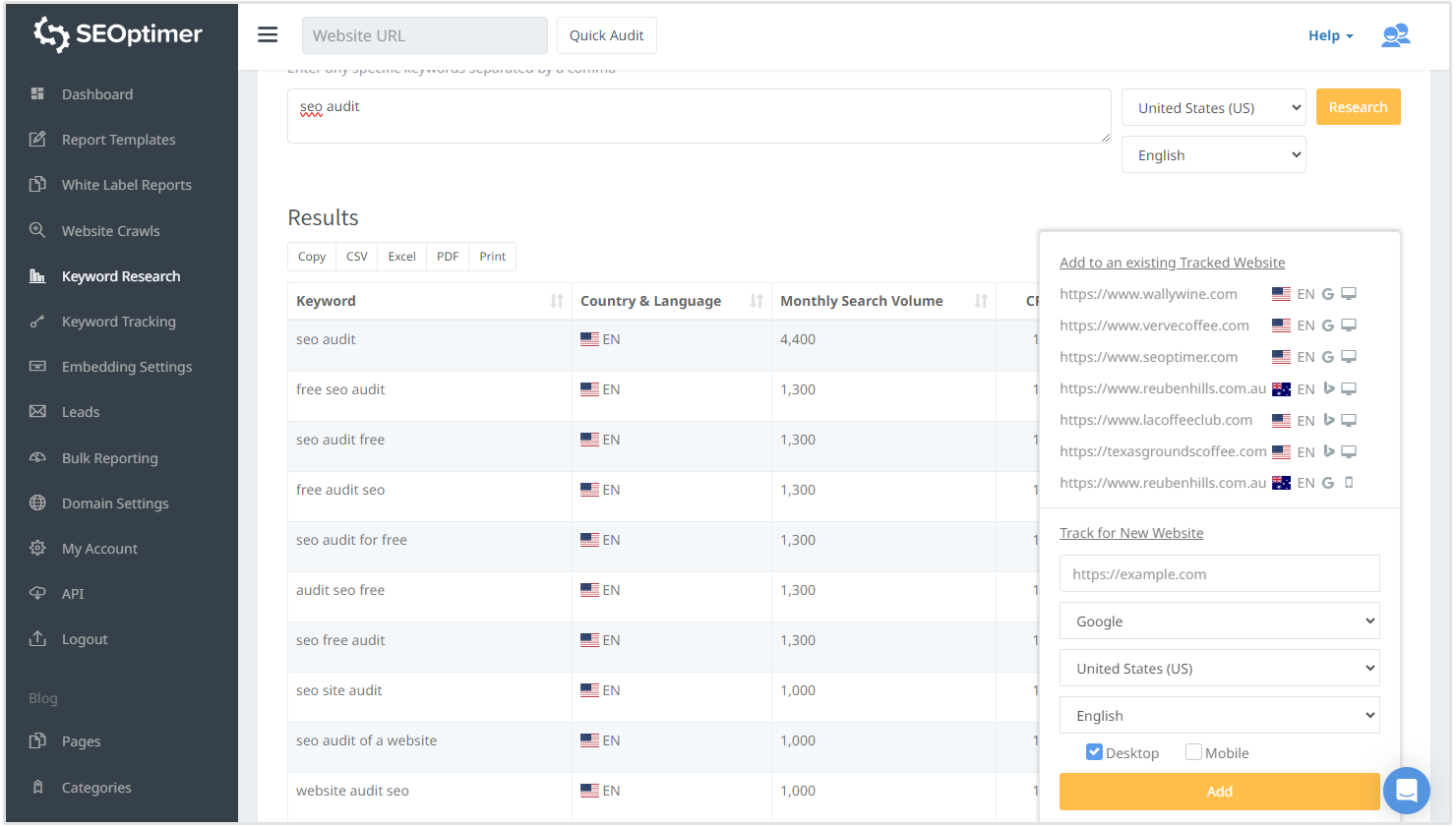
What’s the Difference between an SEO Roadmap and an SEO Strategy?
An SEO strategy is the big-picture plan. It’s all about deciding what you want to achieve with your SEO efforts and the overall approach you'll take to get there. An SEO roadmap, on the other hand, is the step-by-step guide that shows you how to put your strategy into action.
An SEO strategy focuses on the "why" and "what" behind your SEO work.
Let’s take the example of ATX Prestige Landscaping services. Their SEO strategy might be to improve the organic rankings of their service pages targeting 5 new regions in Austin, Texas.

However, the SEO roadmap will answer "how," "when," and "who”.
Their SEO roadmap might be to use an internal team to optimize each of these location pages and to build 10 high-quality links to each of the service pages by the end of the quarter, with the help of LinkBuilder.io, a link building agency.
How to Create an SEO Roadmap
Now, there’s no “right” way to create an SEO roadmap. This document is flexible and can be adapted according to each business or client’s unique requirements.
Although no SEO roadmap will look exactly the same, the steps to creating one are quite standard.
Note: we will be using Google Sheets to create the SEO roadmap for this blog article. However, you can also use a project management software like Monday or Asana if you wish to do so.
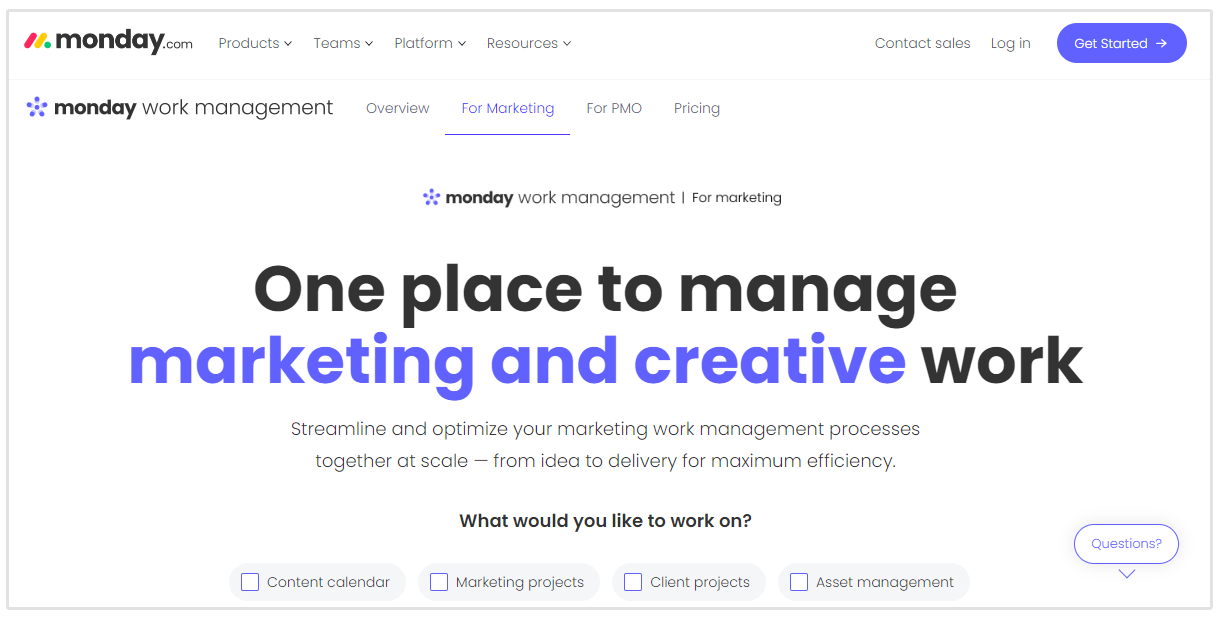
1. Set Clear Goals
The first step in creating an SEO roadmap for your business is to set the goals that you’d like to achieve by the end of the SEO campaign, or by a specific time in the future.
But before you can set goals, you need to establish where you or the client is in terms of SEO.
Understanding your current situation will help you in setting goals for your SEO roadmap.
Take some time to determine the following:
- How much monthly organic traffic am I getting from Google?
- What are my best performing pages?
- Which keywords are sending the most traffic to your website?
- Which “money keywords” am I ranking for?
- How strong is my backlink profile?
- Do I have links from the leading sites in my niche?
- How is my website’s technical SEO doing? Are there areas that can be improved?
As an example, if this evaluation points out that you need to work on improving your site’s loading speed, you can add the activities associated with improving PageSpeed to the SEO roadmap.
This can be quite time consuming when done manually.
Luckily, you can use our SEO audit and reporting tool to get all of these insights within seconds.
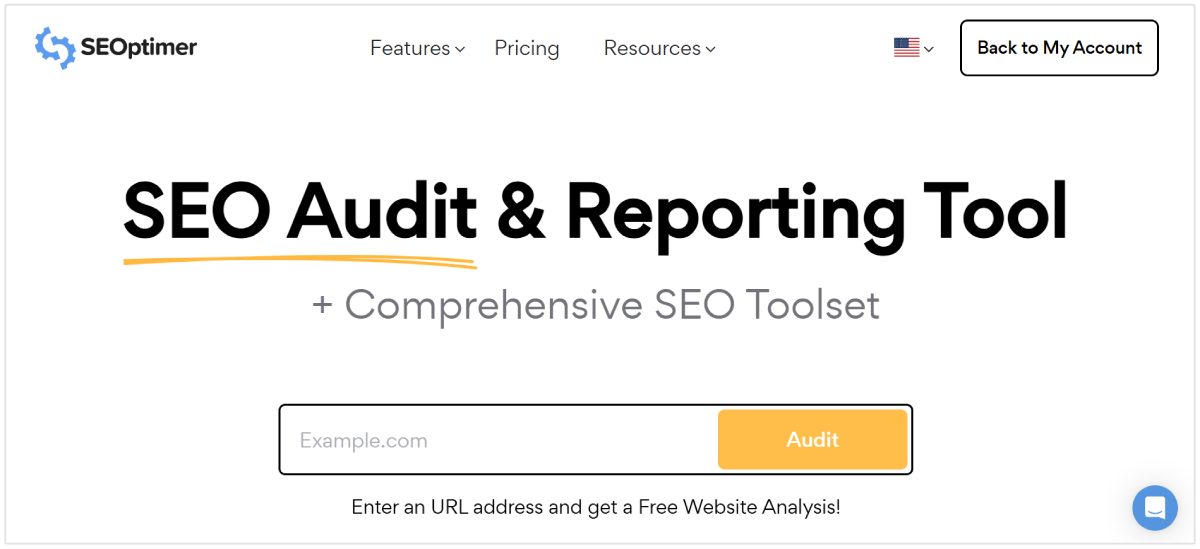
Our tool will crawl your website to give you valuable insights on a broad spectrum of SEO metrics and checks, including:
- On-page SEO
- Backlink profile
- Keyword rankings
- Local SEO metrics
- Website performance
- Usability
When running a site audit, our tool will also generate a list of action items and recommendations on how to improve your site’s SEO performance, arranged according to priority.
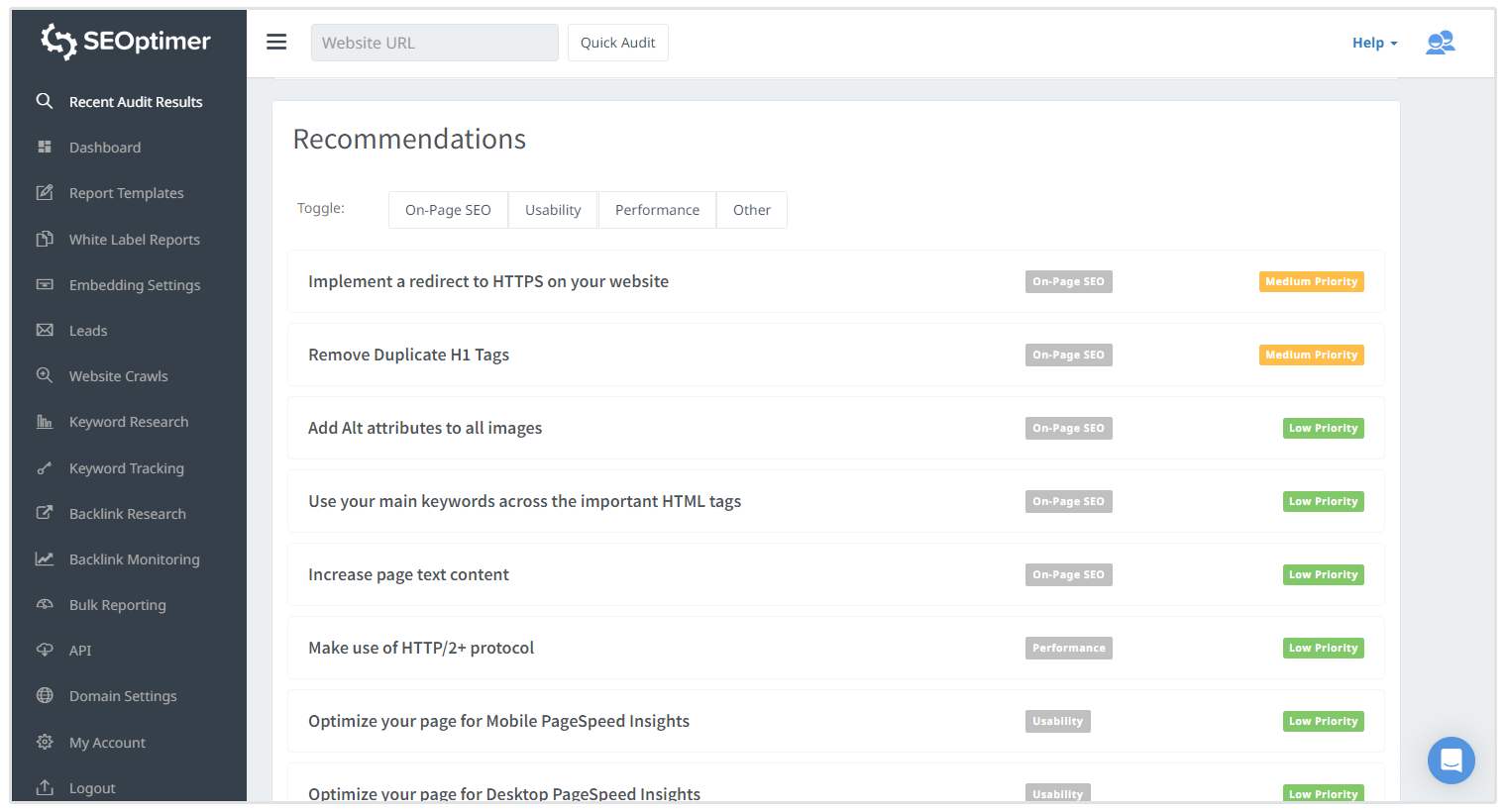
Once you know how your site’s SEO is performing, you can work from there to set goals for your SEO roadmap.
When I create an SEO roadmap, I make sure to have clear and achievable goals for each stage, along with a set timeline. This helps keep the team on track and ensures that we are continuously monitoring and adapting strategies based on results.
- Iryna Melnyk, Marketing Consultant at Jose Angelo Studios
Here are some examples of goals that a business might set:
- Drive 10% more visitors from organic search within the next 12 months.
- Appear in the Google Local Pack for specific geo-targeted keywords for 3 services.
- Increase time on page and reduce bounce rates for specific pages.
- Earn 4 high-quality backlinks from authoritative websites within the next 6 months.
As you can imagine, setting SEO goals is heavily dependent on what you’d like to achieve within your business.
For instance, the SEO goals for an established eCommerce company will look very different to that of a newly established small business targeting local customers.
Every SEO roadmap should always start with a comprehensive audit of the client's website, followed by market and competitiveness research. When you delve into the aspects of the campaign, such as technical SEO, content gap analysis, backlink sources, and competition study, you find quite a number of opportunities.
- Brandon Schroth, Founder of Reporter Outreach
2. List Key Tasks
This next step is what makes up the bulk of the SEO roadmap.
Once you’ve established your SEO goals, create a list of all the tasks that you need to complete in order to achieve your desired result.
I strike a balance between quick wins and long term strategies. Moving the needle early on the quick wins motivates the client toward maintaining or increasing momentum on their results.
- Jacqueline Boyter, Founder at Full Throttle SEO
For instance, if your goal is to rank in one of the top 3 spots for a target keyword in the local map pack, your task list might include:
- Ensuring that you’ve selected the right Google My Business category.
- Create local citations in all of the most popular directories such as Yelp, Foursquare, etc.
- Ensuring NAP details are consistent across the entire web.
- Adding high-quality photos and videos of your physical location.
- Create a review management strategy to get 10 new customer reviews each month on Google My Business.
You can add all the activities and tasks you’ve decided on to the first column of your SEO roadmap.

The tasks you add to this marketing roadmap will be unique for each website you're working on, however, the one thing that all SEOs and marketers need to optimize for is search intent.
By meeting the user's search intent, you're giving your content the best possible chance to rank high on search engines.
Nathaniel Miller from The SEO Marketing Dad believes that understanding search intent is key to building an SEO roadmap:
When I create an SEO roadmap, it always starts with understanding the audience and their search intent. You need to know who you’re talking to and what they’re searching for.
For the B2B supplier I worked with, the roadmap focused heavily on high-intent keywords that competitors weren’t ranking for. We honed in on SKUs and other niche search terms that our audience was actively looking for. This approach led to a 900% increase in sales in the first year, just by optimizing for what customers were actually searching for and delivering valuable, specific content.
3. Plan Workflows and Assign Tasks
Now that you’ve added all of the tasks to the SEO roadmap, the next step is to plan out the workflows.
Ideally, you should already have created a few SEO SOPs for all those repeatable tasks such as uploading content to a CMS, doing keyword research, building links to pages, performing on-page SEO, etc.
Feel free to add links to these documents to each relevant workflow.
Having a set of SEO SOPs will help your team to complete work faster and can reduce the possibility of making mistakes or leaving out something important.
You should arrange action items according to priority and whether there are tasks that are dependent on the completion of prior items on the list.
Let’s take the example of the 10 blog articles that we spoke of earlier.
Well, before those articles can be written or outsourced to a freelance writer, you and your team need to create the content brief for each article you intend to publish on your blog.
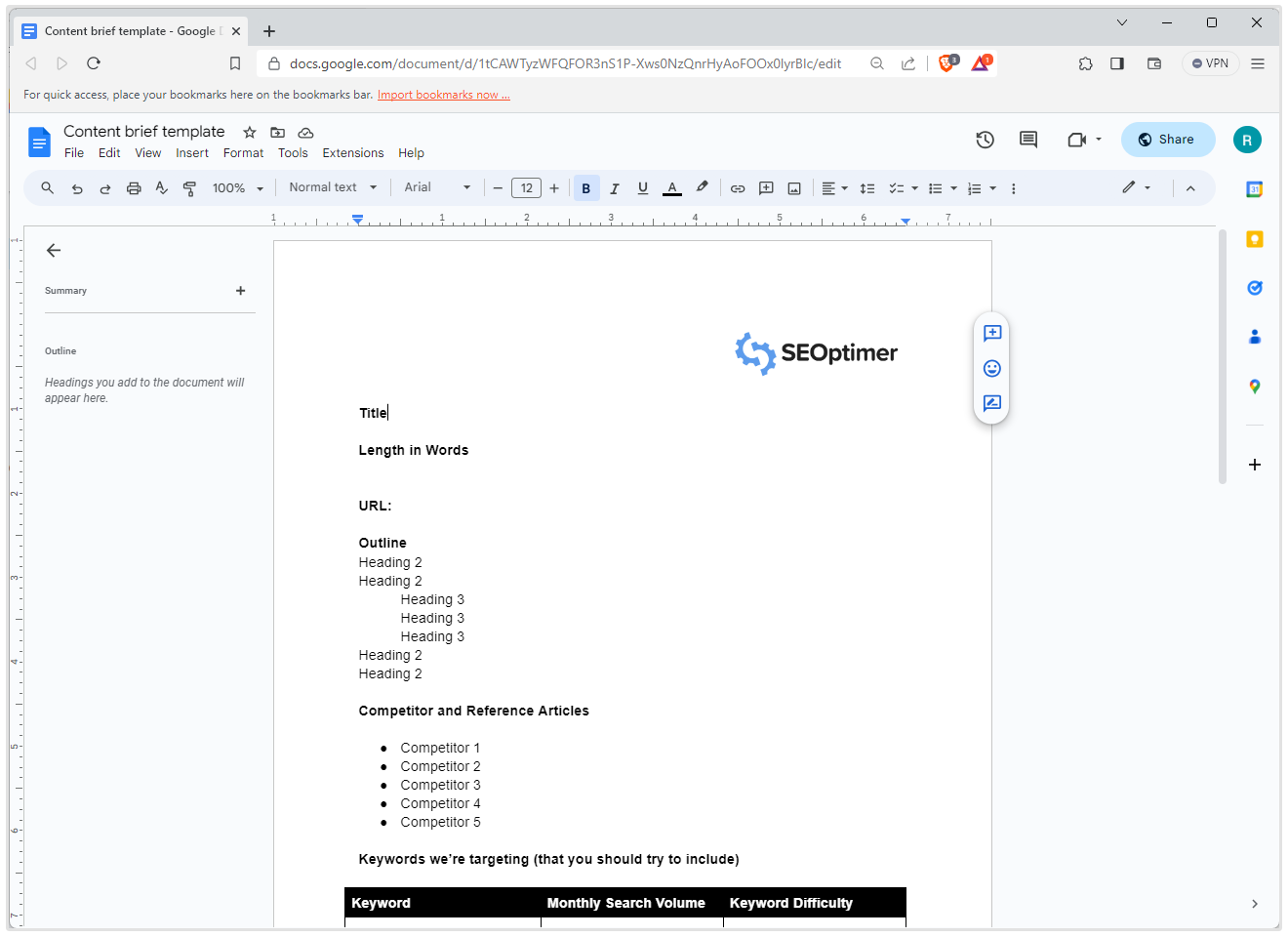
For this example the workflow would look something like this:
-
- Do keyword research to find high-volume, low competition keywords that are relevant to your business.
- Write a content brief for each article.
- Send content briefs to writers.
- Review drafts from writers.
- Publish articles on your website’s blog.
For this step, you need to assign the tasks on your list to relevant staff and freelancers.
Here you’ll also be able to see if you need to hire additional staff or freelancers if you find that your team won’t be able to complete all the tasks listed.
If, however, you find that you don’t have the capacity to hire new people (based on your evaluation in Step 1), then you might have to consider dropping less important tasks or lengthening the duration of the SEO campaign.
If you're an SEO consultant or agency providing services to clients, then lengthening the duration of the SEO campaign isn’t really an option, since this will cost the client more or could lead to scope creep.
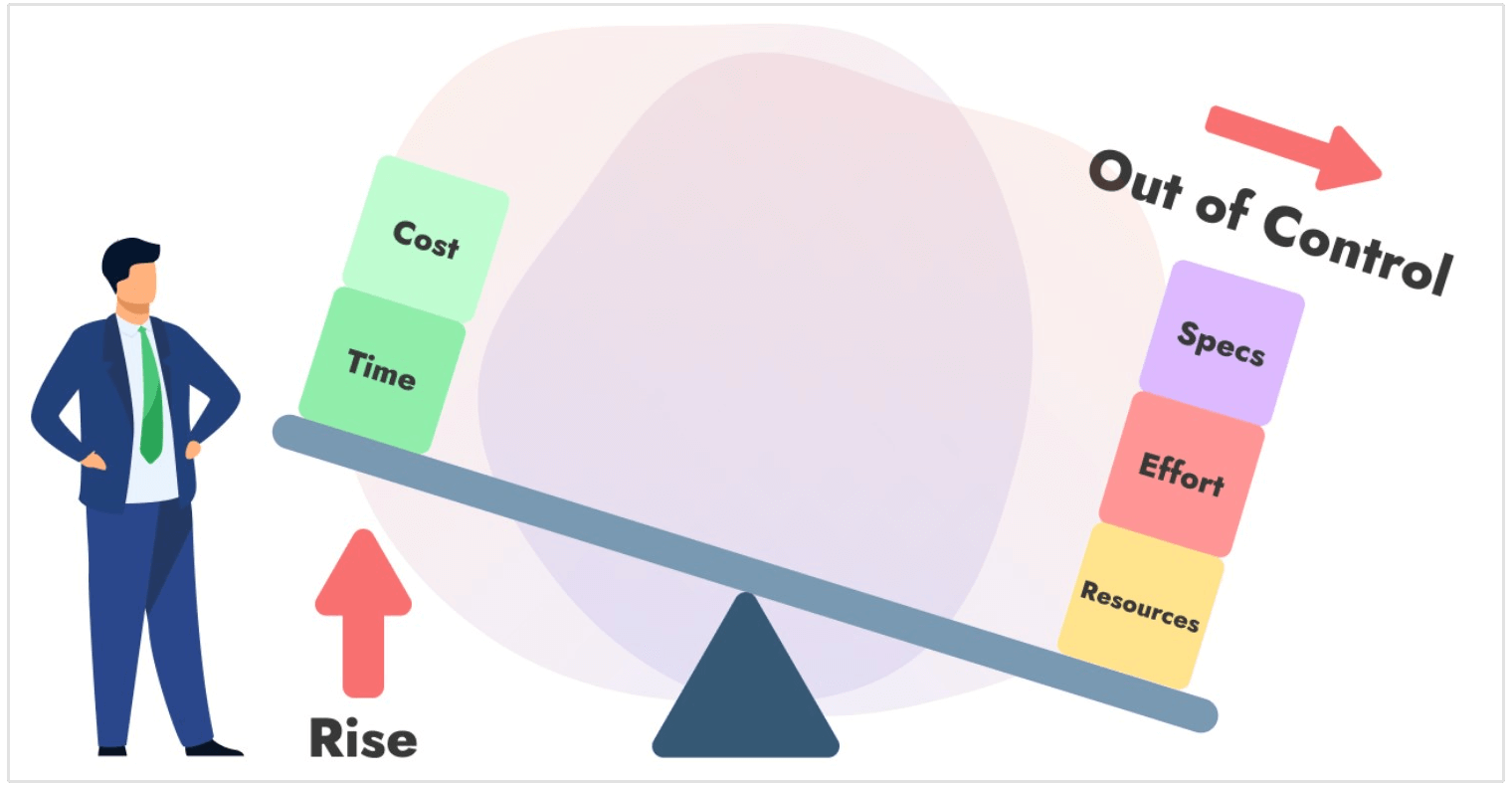
In this situation you’ll be better off leaving tasks that have the lowest impact on outcomes.
For this reason, it’s important to arrange action items according to priority and potential reward. Ideally, you want to focus on completing tasks that yield the best results for the least effort.
4. Add a Timeline to the SEO Roadmap
An SEO roadmap also features a timeline for when each of the action items will be completed.
This timeline can vary from 6 months to up to a full calendar year, depending on the duration of the SEO project.
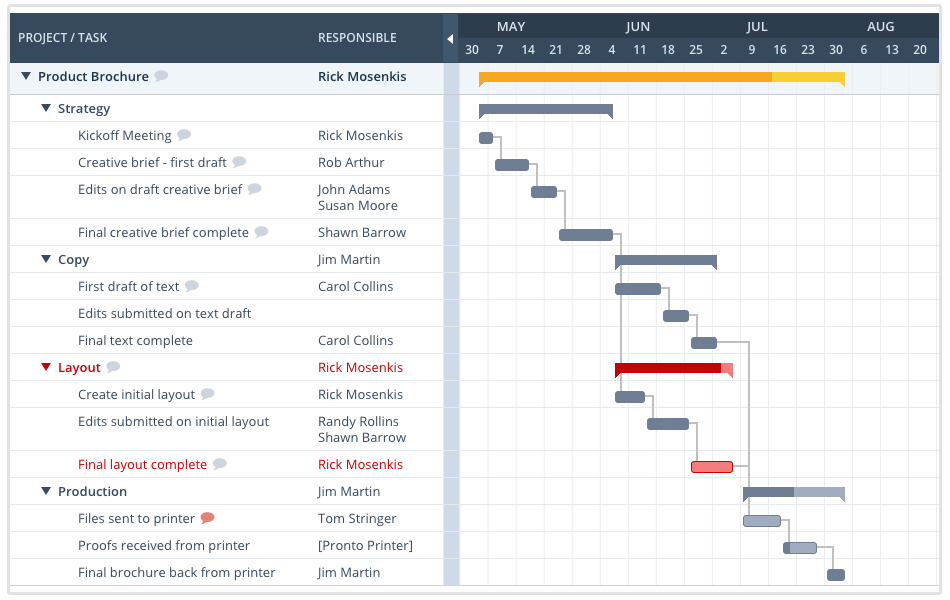
Adding a timeline is one of the key principles of successful SEO project management and gives internal teams a predetermined schedule to follow.
5. Monitor the Quality of Results
The last step in this process isn’t actually related to the creation of the SEO roadmap itself, but deals more with the monitoring of results.
If you notice that the quality of work is falling or that your SEO efforts aren’t yielding any positive results, then you should revisit the SEO roadmap to determine if there are any steps missing in the action list.
The problem could also be that you’re not sticking to the timeline you’ve established. This could be because you’ve overestimated how fast tasks will be taken care of.
If this is the case, try to identify which parts of your processes are causing the delays and rectify the issue.
SEO Roadmap Template
Here’s the link to our free SEO roadmap template. Be sure to copy the Google Sheets document so that you can edit the document according to your needs.
You can also download the template for Excel below.
Wrapping Up
As you've seen from reading this post, an SEO roadmap serves as a blueprint for properly executing your SEO strategy.
When done right, this document takes the guesswork out of which steps to take to reach the intended end result. This ensures that team members are on the same page and know exactly what is expected of them.
Keep these steps in mind when you’re creating your SEO roadmap.
Let the steps that we’ve outlined serve as a guideline for developing your roadmap, but also remember to be flexible since each SEO campaign and business is different.











